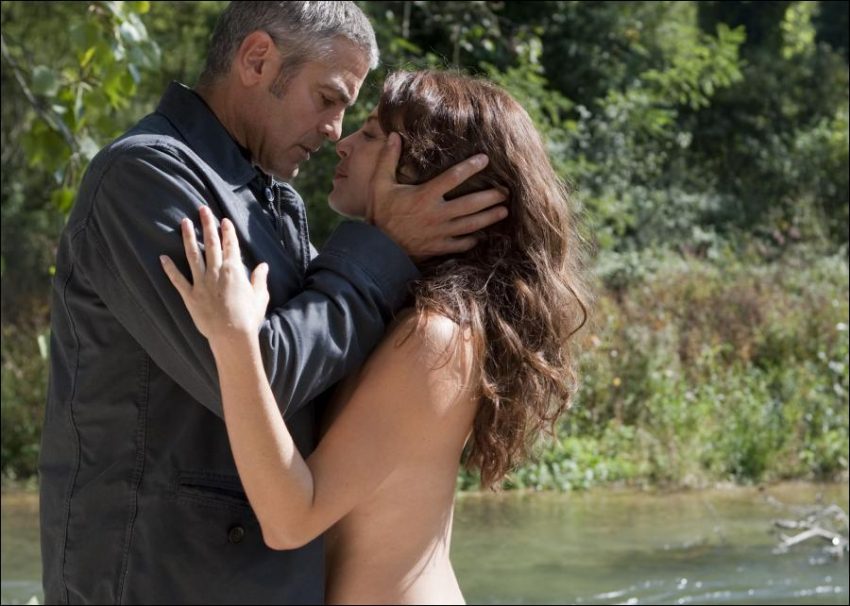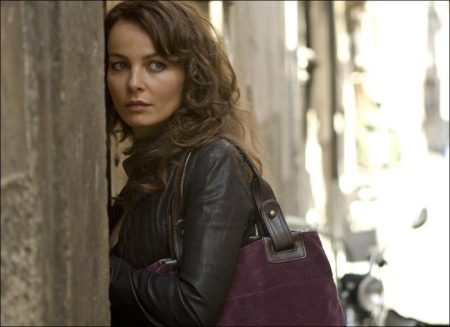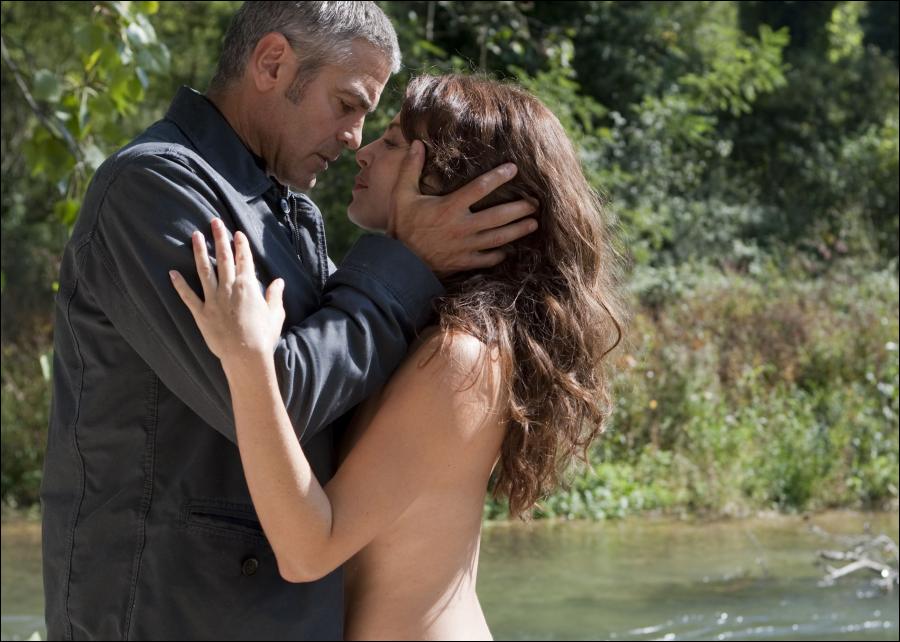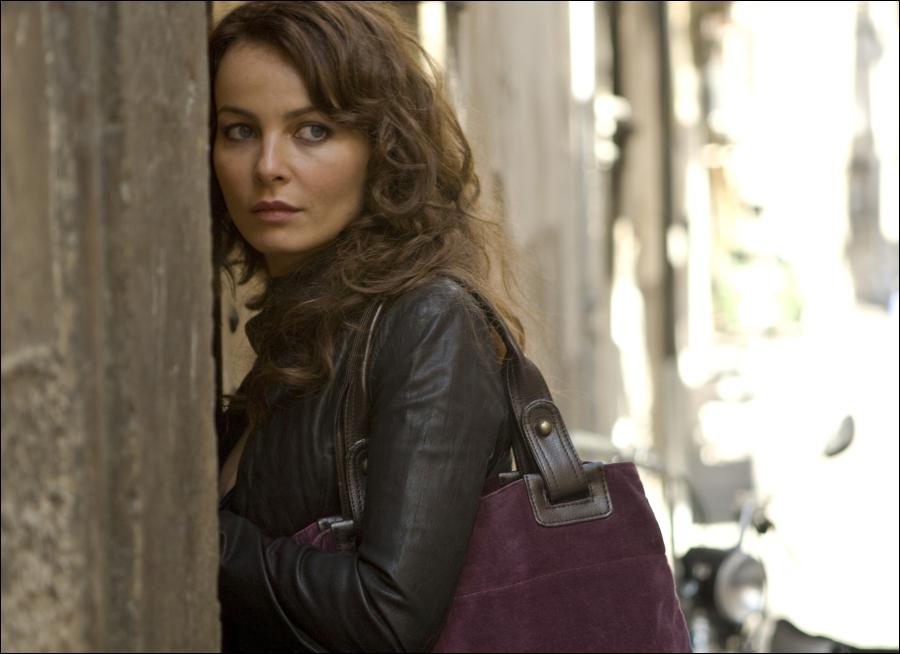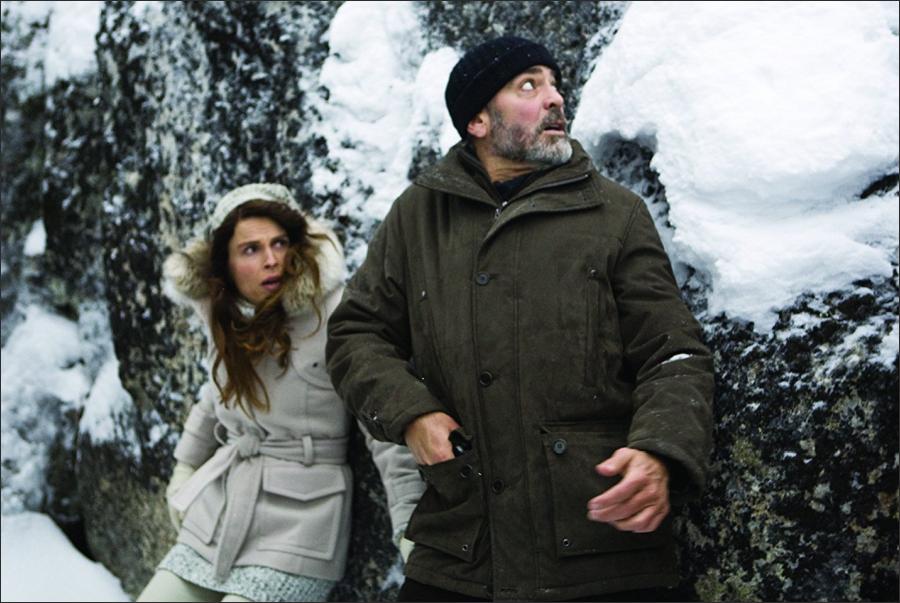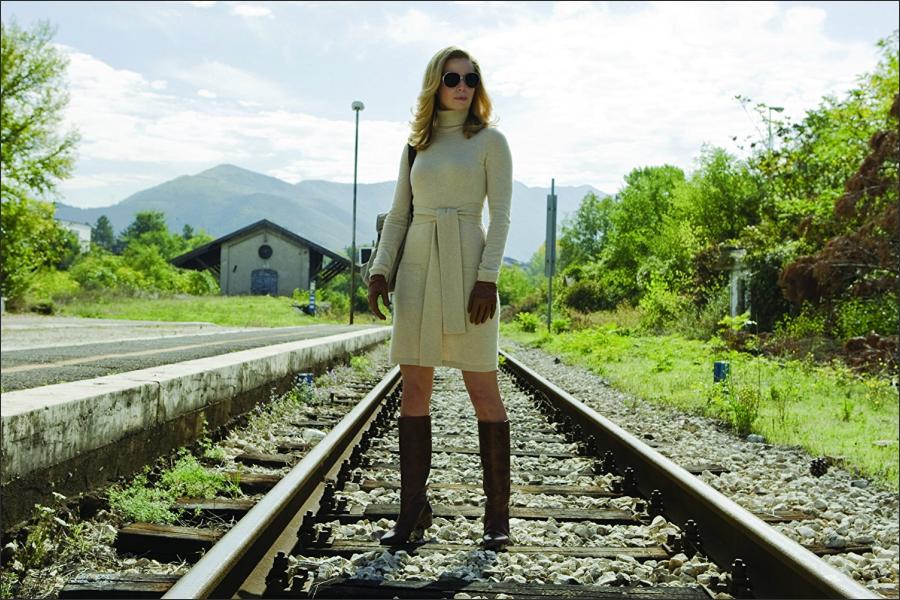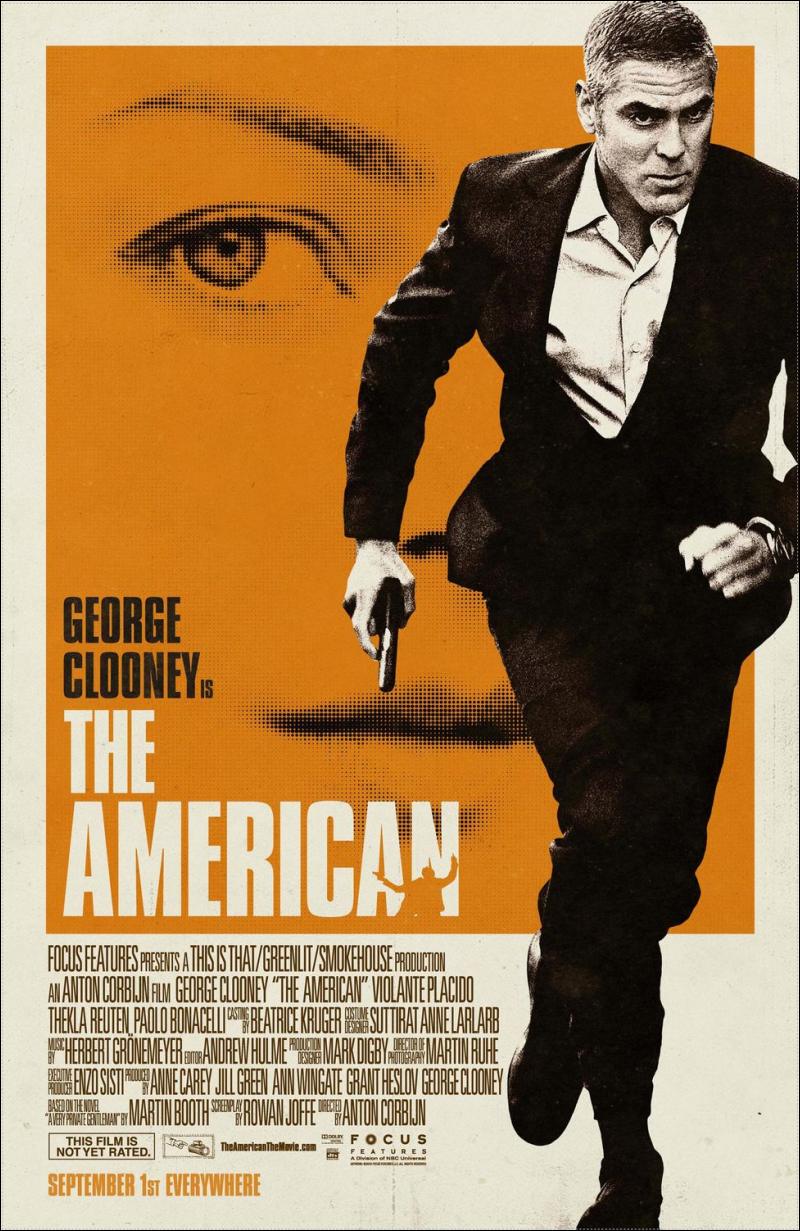All About The American
Wingate recalls, “I had started working on getting the book made into a movie back in the 1990s, with BBC Films. They had let it drop, and later Jill and I had been working together and I suggested reviving the project. I’d always been drawn to the love story for the lead character, a man who has had enough of escaping his life yet seeks to escape what he is.”
Green elaborates, “What also attracted us to the book was the insight into this character as a solitary figure who wants to find romance and redemption, despite his escalating inner turmoil. To have a lead character who is both an expert gun maker and assassin put me in mind of The Day of the Jackal, which also was adapted from a novel. At the time, Martin Booth was still alive, and he insisted on English/European producers for the movie from his book. So that was Ann and me.
“But Anne Carey was so keen on the project that we said ‘Why not,’ and so we got together in a happy marriage, spending probably 6—7 years working on the script.” Carey adds, “It then took a while to find the right director and star.”
Green remarks, “When we first met with Anton, his vision for the piece very much suited Martin’s original book, and we liked his articulated visual sense of the material.”
Wingate notes, “Inevitably, after all these years, there had to be updates to the material. We had to do that more than once. What’s happened is that the movie got much closer to the feel of the novel, much leaner and as a result stronger.”
By the end of the decade, Carey reports, “Anton had become the linchpin, the one whose involvement got this to jell. In our conversations with him, it was clear that he envisioned this to be at once a classically framed and told film as well as a contemporary one in the style and the shooting.”
Producer Grant Heslov, who joined the project in 2008, notes, “Because Anton comes from the world of photography, he is able to compose his frames in a striking way something that many directors spend their entire careers striving to achieve. But he also brings a perspective where he doesn’t see anything straight on; everything comes from a bit of an odd angle, which is a plus.”
Screenwriter Rowan Joffe came to, and at, the material from several angles. He comments, “When Anton, Anne, and Grant asked me to write The American, I was thrilled at the chance to adapt such a morally rich, visually arresting, and unusual novel. Though there had been several previous scripts, I decided to start completely afresh, inspired by Anton’s brilliant idea to re—conceive the story as a kind of contemporary Western.
“With that in mind, I wove together my favorite passages from the book, simplifying the overall structure into a character—motivated thriller with a streamlined plot, a powerful redemptive theme, very spare dialogue, and a wild Italian landscape that acts like a character in its own right, exerting its transformative, melancholy beauty on our hero and assisting him in his journey to redemption. George Clooney’s interest in my first draft allowed me to continue refining subsequent drafts with him in mind; that was a considerable dramatic boon for the script as well as a rare opportunity to craft a character for one of the greatest movie actors alive.”
For Corbijn, the question of just where to film in as called for in the script – Italy was critical to pre—production planning. He reflects, “The surroundings had to be a character in the movie. I had a clear idea of how the landscape should look, and I wanted to use towns and villages as a back lot.” Accordingly, the filmmakers were loath to attempt “casting” another country instead.
The name of the movie, however, did change; after going by the novel’s title, Corbijn baptized the film as Il Americano before it finally became The American.
In terms of specific Italy locales, all concerned had been transfixed by Abruzzo, a mountainous region located east of Rome and spreading from the base of the Apennine range of mountains towards the Adriatic Sea. Remote and majestic, the area is “a raw environment, an honest landscape of a type that is rarely seen in movies,” marvels Corbijn.
By the winter of 2008, the filmmakers had chosen their Abruzzo locations, as Corbijn and Joffe together and, prior, Carey had all made scouting trips. Then, on April 6th, 2009, the Abruzzo region was hit by an earthquake. There were over 300 casualties; 60,000 people were suddenly homeless; and many parts of the ancient town of L’aquila less than 70 miles northeast of Rome – lay in ruins.
It was also on April 6th that Corbijn was meeting with Clooney to finalize the latter’s plans to produce and star in the movie. Corbijn remembers, “We discussed our shared hope that filming The American would help to boost the region economically, what with the money spent during production and the finished film encouraging tourism in the future.”
Executive producer Enzo Sisti adds, “I started with the production in April. Everyone – Anton, George, Focus Features was saying, ‘We must go with Abruzzo. They need a film like this, and our movie needs a beautiful region like this.’”
Wingate notes, “The atmosphere gives you a different view and a different feel; it’s not the pretty Tuscany or Umbria, or the beautiful Florence or Rome, of so many movies.”
Corbijn says, “The terrain is rugged and rocky; it’s not generally where tourists go. But it’s a wonderful area that needs preserving; beyond even the earthquake, oil drilling is harming the landscape.”
Heslov sums up the region’s appeal to the production as “not just an Italy we haven’t seen, but one filmed in a way we haven’t seen it, by way of Anton’s take.”
The filmmakers also immediately stepped up to avail themselves of Italy’s new financial incentive, which was 10 years in the making and had been formally passed just a few months before the earthquake hit; The American was the first movie to do so before filming began. Carey offers, “The big benefit is that you get the money during production, unlike with many tax credits where you have to wait 1—2 years.”
Clooney visited L’aquila with actor Bill Murray on July 9th to support quake victims who were living in tents, and to inaugurate a movie theater in a tent camp in San Demetrio. He promised that filming of his new movie would begin in the region in September.
As the production firmed up its commitment to the region and the fall filming schedule, casting continued. Corbijn already knew that he had found the right actor to play Jack, stating, “This is a character George hasn’t played before; it’s always interesting when an actor finds something new. He’s so good with dialogue, and in this movie he is playing a man of few words who is always on the lookout and constantly in a state of tension.”
Heslov adds, “Jack is someone who is only now finding moments of beauty in his life. Even if he now makes the right choices, does fate have a different idea for him?
“George brings this stillness to the role of Jack, who spends a lot of time in silence. That’s a challenge for an actor, to keep the inner life going on—screen.”
Green offers, “This role reminds me of George’s work in Michael Clayton, in that he can convey so much through his eyes alone.”
Carey notes, “Audiences instinctively place their trust in George, which is important to our establishing the character of Jack.”
Wingate says, “It’s a much darker role for George, yet he embodies the character so well. We were all rather ecstatic to get him to play the part.”
The American (2010)
Directed by: Anton Corbijn
Starring: George Clooney, Bruce Altman, Thekla Reuten, Irina Björklund, Violante Placido, Lars Hjelm, Paolo Bonacelli, Giorgio Gobbi, Thekla Reuten, Silvana Bosi, Samuel Vauramo
Production Design by: Mark Digby
Cinematography by: Martin Ruhe
Film Editing by: Andrew Hulme
Costume Design by: Suttirat Anne
Set Decoration by: Michelle Day
Art Direction by: Denis Schnegg, Domenico Sica, Mikael Varhelyi
Music by: Herbert Grönemeyer
Screenplay by: Martin Booth, Rowan Joffe
MPAA Rating: R for violence, sexual content and nudity.
Distributed by: Focus Features
Release Date: September 3, 2010
